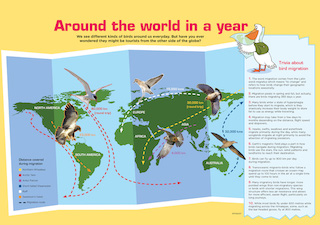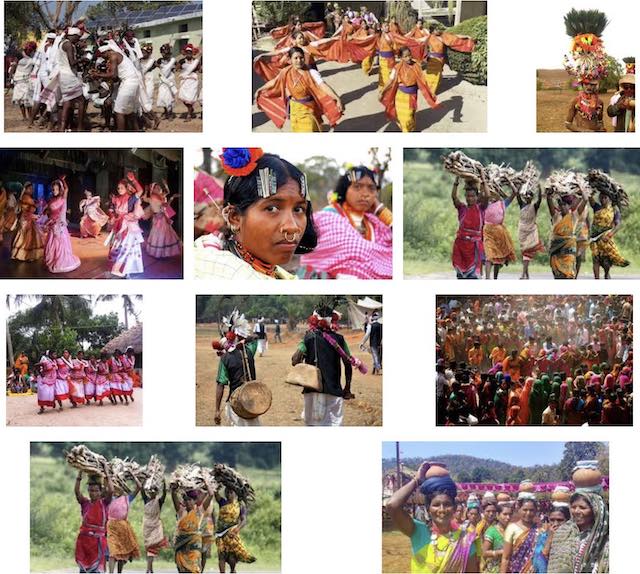Rich Forests: Making a living under the canopy
[…] PGS has been received enthusiastically in India and elsewhere. The PGS Organic Council was registered in Goa, India, in April 2011. Since then, the Government of India – under the national project on organic farming – has officially launched the participatory guarantee system (PGS India) for organic produce. In India over 5,000 farmers are already using the new system. PGS has also been embraced internationally. The International Federation of Organic Agriculture Movements (IFOAM), for instance, recognises that third- party certification is too expensive and too complex for small farmers. According to IFOAM, PGS are “locally focused quality assurance systems, certifying producers based on active participation of stakeholders and building on a foundation of trust, social networks and knowledge exchange.”
IFOAM has set standards for participatory guarantee systems and keeps track of the number of organic farmers worldwide accredited under a PGS. It has been a significant venue for promoting the PGS model globally. Keystone’s Mathew John was elected to sit on the World Board of IFOAM. PGS has so far been introduced in 40 countries. India and Brazil are frontrunners in PGS certification. An assessment in Vietnam by the local Center for Agrarian System Research and Development revealed that PGS has helped increase the economic efficiency of vegetable producers by up to 30%, bringing a stable annual income of about US$1750 to 2000 to family farmers.
For the Kurumbas tribe in the Nilgiri Biosphere Reserve, the new system is already a fact of life. In 2010 the price of their honey sold on the organic market had increased from Rs 100 to Rs 140 per kilo (Karunakaran, 2010). In 2015 this had increased to over Rs 220 per kilo. With an estimated 6 tonnes of honey purchased by Keystone every year, this translates into a sweet profit for the tribal community. Trade in non-timber forest products by indigenous communities.
In the Nilgiri Biosphere Reserve non-timber forest products (NTFPs) have helped to sustain the lives and cultures of indigenous communities for centuries. The Reserve hosts several tribes such as the Todas, the Paniyas, the Irulas, the Kurumbas, the Kuruchiyans, the Mullukurumbas, the Adiyans and the Alyars [Alar]. The Chola Naikans in the New Amarambalam area are the only surviving hunter- gatherers in the Indian subcontinent. One of the most popular NTFPs among these indigenous groups is honey, which is gathered from the wild and has been a major source of income for more than 500 groups of Kurumbas, Irulas, and other tribes (Karunakaran, 2010).
Overextraction of a marketable forest product can result in depletion of the resource and ecosystem deterioration. This is where the importance of the price comes in: a higher price is a clear financial incentive for the gatherers to manage their resource sustainably. However, local traders are usually the ones who set the prices; the harvesters have little to no control over this. Market forces are at play and tribal communities tend to be at the losing end. It is therefore important that indigenous communities take a more active role in the marketing of their products. The honey business in particular is potentially lucrative. Engaging in it can improve local people’s livelihoods and help protect the biodiversity of their ancestral forests at the same time. […]
Source: “Rich Forests: Making a living under the canopy” by Julian Gonsalves (Main author), p. 51, Publisher: Both ENDS Amsterdam © Both ENDS 2015 | Find related publications on Worldcat.org >>
For additional learning resources visit the website of the Centre for Science and Environment (CSE), “a public interest research and advocacy organisation based in New Delhi”:
Communication for Awareness
CSE’s publications and informational products have been its strength and they have always combined research and readability to get the message across.

CSE’s tools for awareness raising are periodicals, publications, films/short spots, briefing papers, exhibitions, posters and other products. CSE’s informational products reach people in more diverse ways such as features service, website and e-news bulletins. […]
Source: About CSE
URL: https://www.cseindia.org
Date Visited: 10 July 2022

Rich Forests is an alliance of a Dutch organisation (Both ENDS) and two international networks (NTFP-EP en IAFN). Together we work with producers and entrepreneurs in more than 20 countries. Our objective is to help local producers improve their production of and trade in forest products and to link them to social entrepreneurs and investors. We believe that local knowledge combined with innovative business models and entrepreneurial spirit hold the key to a greener future.
For more information: info@richforests.org
Source: About Us
Address: http://www.richforests.org/about-us/
Date Visited: Sat Jul 16 2016 10:28:09 GMT+0200 (CEST)
Tribals in Kerala
Tribals in Kerala (Adivasis of Kerala) are the indigenous population found in the southern Indian state of Kerala. Most of the tribal people of Kerala live in the forests and mountains of Western Ghats, bordering Karnataka and Tamil Nadu.
According to the 2001 census of India, the Scheduled Tribe population in Kerala is 3,64,189 (lunas – 180,169 and felunas – 184,020). Wayanad has the highest number of tribals (1,36,062). [Idukki- (50973) and Palakkad (39665) districts are the next two that make the lion portion of the native tribal people groups in the state. The Paniya (Paniyar) are the largest of the 35 major tribes.
Tribal people groups who are food-gatherers, with diminishing population and very low or little literacy rates can be called as Primitive Tribes. Cholanaikkans, Kurumbas, Kattunaikans, Kadars and Koragas are the five primitive tribal groups in Kerala. They constitute nearly 5% of the total tribal population in the State. Cholanaikkans can be said as the most primitive of them and found only in the Malappuram District. Only a handful of families are living in the Mancheri hills of Nilambur forest division. Kattunaikans, another lower-hill community related to Cholanaikkans, are mainly seen in Wayanad district and some in Malappuram and Kozhikode districts. Kadar population is found in Trisur [Thrissur/Trichur] and Palakkad districts. Kurumbas are living in the Attappady Block of Palakkad district. The Koraga habitat is in the plain areas of Kasaragod district. […]
Major tribes
Tribals in Kerala are living on the hill ranges, mainly on the Western Ghat, bordering Karnataka and Tamil Nadu. As a natural border, the mountain has branches in Kerala as well as in Tamil Nadu and Karnataka. The tribals on the Kerala hills are only listed here.
It is estimated that there are about 4 lakh tribal people living in Kerala and about half of this population has made the interiors of Wayanad their home. The tribals were the original inhabitants of Wayanad region. […]
Area – Tribes
- Kasaragod: Koragar, Maradi
- Wayanad – Paniyar, Kurichyar, Kattunaikkar,Mullukkurumar, Adiyar, Kanduvadiyar, Thachanadar, Kanaladi
- Attappadi – Irular, Kurumbar, Mudugar
- Nilambur – Cholanaikkar, Aranadan, Kadar, Alar, Paniyar
- Parambikkulam – Kadar, Malasar, Malamalasar
- Idukki – Malampadaram, Malappulayan, Malayarayar, Urali, Muthuvan, Mannan
- Nedumangad: Kanikkar, Malandar
Source: Tribals in Kerala
Address: https://kirtads.kerala.gov.in/tribals-in-kerala/
Date Visited: 29 November 2020
[Bold typeface added above for emphasis]
“The practice of religious rituals, ceremonies and sanctions by specific cultural groups allow such sacred landscapes to be maintained, emphasizing that humans are intrinsically part of the ecosystem. Taboos, codes and customs specific to activities and community members restrict access to most sacred groves. […] The inclusion of local people’s needs and interests in conservation planning is increasingly accepted as essential, both to promote the well-being of human populations, and to ensure that biodiversity and conservation needs are met in the long-term.” – Nazir A. Pala, Ajeet K. Neg and N.P. Todaria in “The Religious, Social and Cultural Significance of Forest Landscapes in Uttarakhand Himalaya, India” (International Journal of Conservation Science, Vol. 5, Issue 2, April-June 2014) | Sacred groves | Biodiversity and development – Himalaya >>
Up-to-date reports by Indian experts and journalists
Search tips
Combine the name of any particular state, language or region with that of any tribal (Adivasi) community.
Add keywords of special interest (music, poetry, dance just as health, sacred grove and biodiversity); learn about the rights of Scheduled Tribes such as the “Forest Rights Act” (FRA); and the United Nations “Declaration on the Rights of Indigenous Peoples”, “Universal Declaration of Human Rights”, “women’s rights”, or “children’s right to education”.
Ask a question that includes “tribal” or “Adivasi”, for instance: “Adivasi way of life better?” (or “tribal way of life worse?”)
Specify any particular issue or news item (biodiversity, bonded labour and human trafficking, climate change, ecology, economic development, ethnobotany, ethnomedicine, global warming, hunter-gatherers in a particular region or state, prevention of rural poverty, water access).
For official figures include “scheduled tribe ST” along with a union state or region: e.g. “Chhattisgarh ST community”, “Himalayan tribe”, “Scheduled tribe Tamil Nadu census”, “ST Kerala census”, “Particularly Vulnerable Tribal Group Jharkhand”, “PVTG Rajasthan”, “Adivasi ST Kerala”, “Adibasi ST West Bengal” etc.
In case the Google Custom Search window is not displayed here try the following: (1) toggle between “Reader” and regular viewing; (2) in your browser’s Security settings select “Enable JavaScript” | More tips >>
Note: hyperlinks and quotes are meant for fact-checking and information purposes only | Disclaimer >>
List of websites covered by this Google custom search engine
Academia.edu (platform for academics to share research papers) – www.academia.edu
Archive.org – https://archive.org
Centre for Science and Environment – https://www.cseindia.org
Current Conservation – https://www.currentconservation.org
Development and Cooperation (D+C) https://www.dandc.eu
Down To Earth (India) – www.downtoearth.org.in
India Environment Portal – www.indiaenvironmentportal.org.in
Harnessing Nature Magazine – https://harnessingnature.online
Mongabay-India – https://india.mongabay.com
M S Swaminathan Research Foundation – www.mssrf.org
Navdanya (protecting India’s biodiversity based food heritage) – https://navdanya.org
Third World Network (Penang, Malaysia) – https://twn.my
The Shola Trust (nature conservation in the Nilgiri region) – www.thesholatrust.org

Indian online periodicals and platforms | Images view >>
~ ~ ~
Personalize your CustomSearch by combining other search words >>
(e.g. name of a tribal community and region, a craft, or dance and puppetry)
Research the above issues with the help of Shodhganga: A reservoir of theses from universities all over India, made available under Open Access >>
Note: hyperlinks and quotes are meant for fact-checking and information purposes only | Disclaimer >>

Learn more
Atree.org | Ashoka Trust for Research in Ecology & the Environment (posts)
Biodiversity | Biodiversity hotspot | Hyderabad biodiversity pledge
Climate change | Audio | The Climate Question (BBC Podcast)
eBook | Background guide for education
Ecology and environment | Eco tourism | Tourism | Wildlife tourism
Environmental history and what makes for a civilization – Romila Thapar
Equations blog (Equitable Tourism Options)
Forest Rights Act (FRA) | Hunter-gatherers | Illegal mining | Legal rights over forest land
Information provided by Indian government agencies and other organizations (FAQ)
Nature and wildlife | Crocodile | Elephant | Tiger | Mangrove forest | Trees
PARI’s tales from tiger territory | People’s Archive of Rural India (PARI)
Shola Trust | Nilgiri Biosphere
Water and development – India’s tribal communities
Western Ghats – tribal heritage & ecology
What is the Forest Rights Act about?
Who is a forest dweller under this law, and who gets rights?